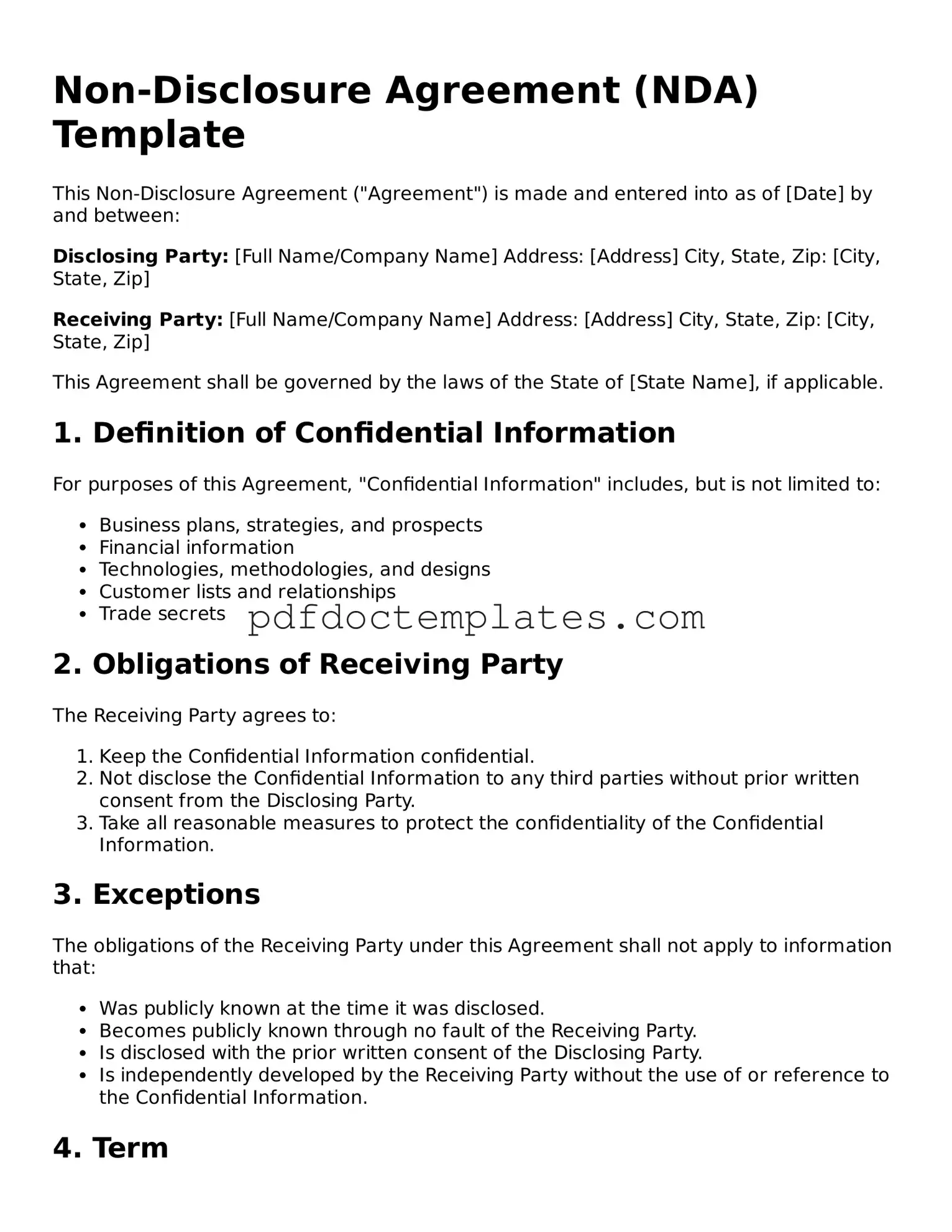Non-Disclosure Agreement (NDA) Template
This Non-Disclosure Agreement ("Agreement") is made and entered into as of [Date] by and between:
Disclosing Party: [Full Name/Company Name]
Address: [Address]
City, State, Zip: [City, State, Zip]
Receiving Party: [Full Name/Company Name]
Address: [Address]
City, State, Zip: [City, State, Zip]
This Agreement shall be governed by the laws of the State of [State Name], if applicable.
1. Definition of Confidential Information
For purposes of this Agreement, "Confidential Information" includes, but is not limited to:
- Business plans, strategies, and prospects
- Financial information
- Technologies, methodologies, and designs
- Customer lists and relationships
- Trade secrets
2. Obligations of Receiving Party
The Receiving Party agrees to:
- Keep the Confidential Information confidential.
- Not disclose the Confidential Information to any third parties without prior written consent from the Disclosing Party.
- Take all reasonable measures to protect the confidentiality of the Confidential Information.
3. Exceptions
The obligations of the Receiving Party under this Agreement shall not apply to information that:
- Was publicly known at the time it was disclosed.
- Becomes publicly known through no fault of the Receiving Party.
- Is disclosed with the prior written consent of the Disclosing Party.
- Is independently developed by the Receiving Party without the use of or reference to the Confidential Information.
4. Term
This Agreement shall remain in effect for [number] years from the date of execution.
5. Miscellaneous
This Agreement represents the entire understanding between the parties and supersedes all prior agreements. Amendments to this Agreement must be in writing and signed by both parties.
6. Signatures
IN WITNESS WHEREOF, the parties have executed this Non-Disclosure Agreement as of the day and year first above written.
_____________________________
Disclosing Party Signature
_____________________________
Receiving Party Signature
Date: _______________
